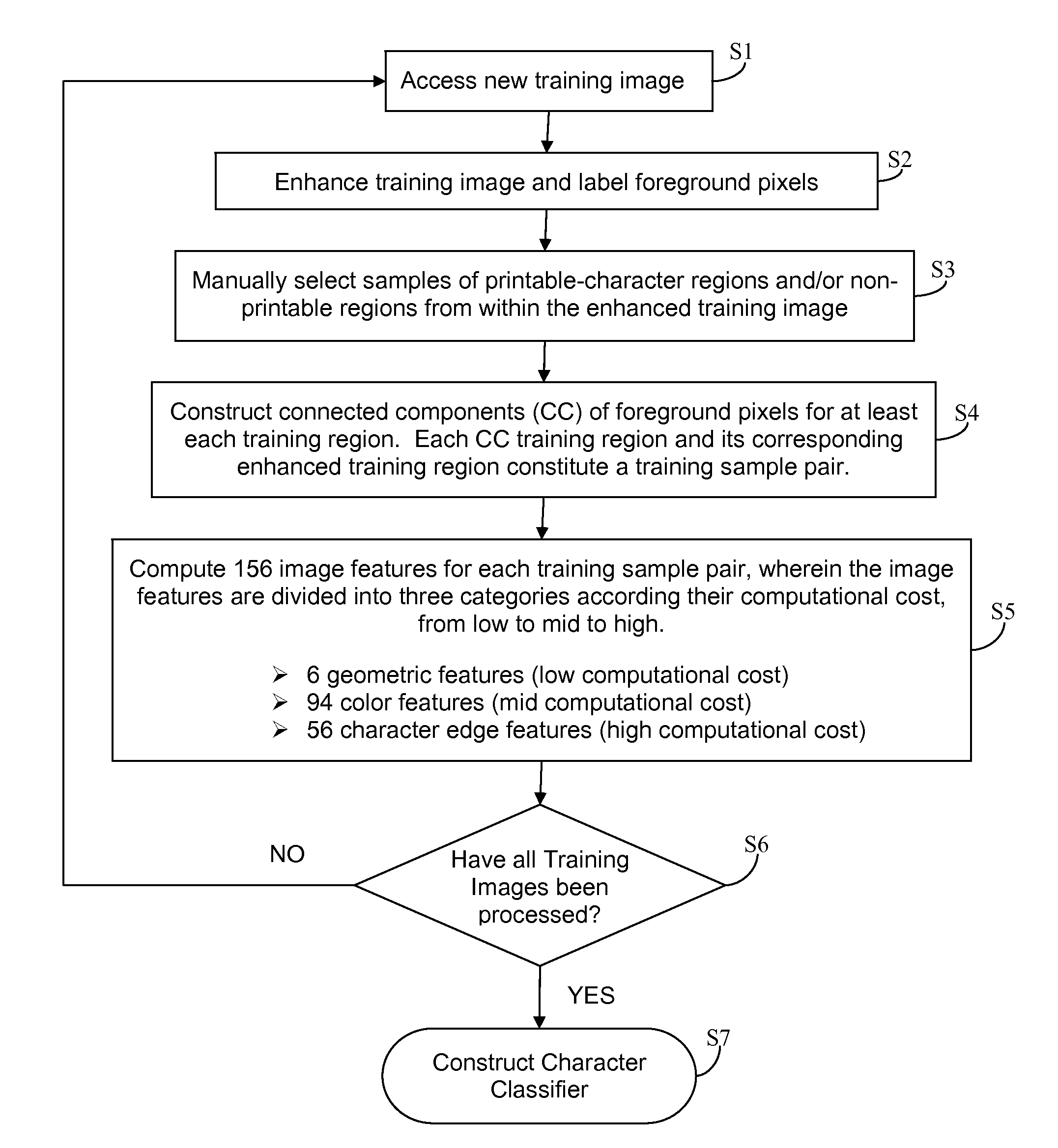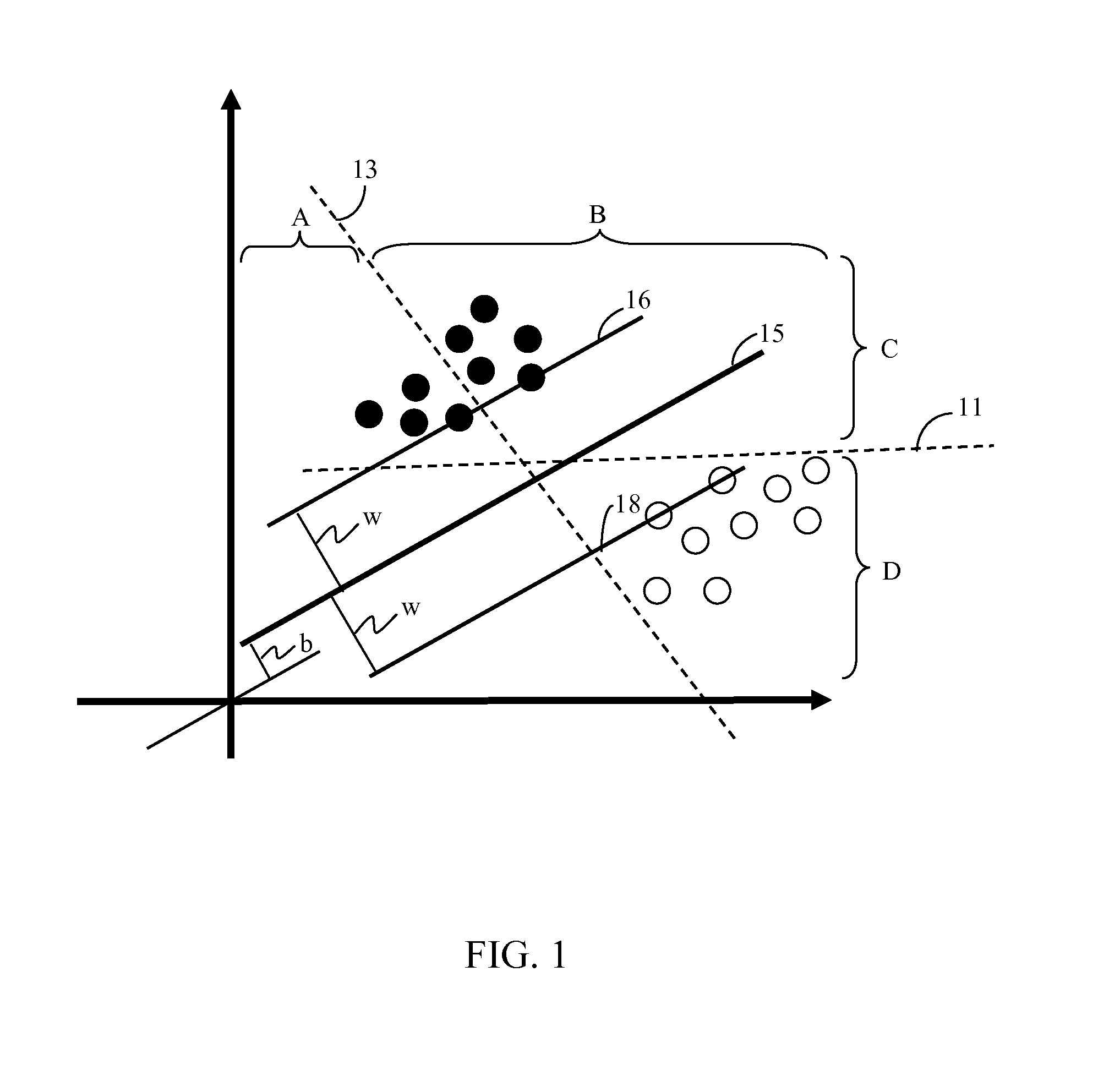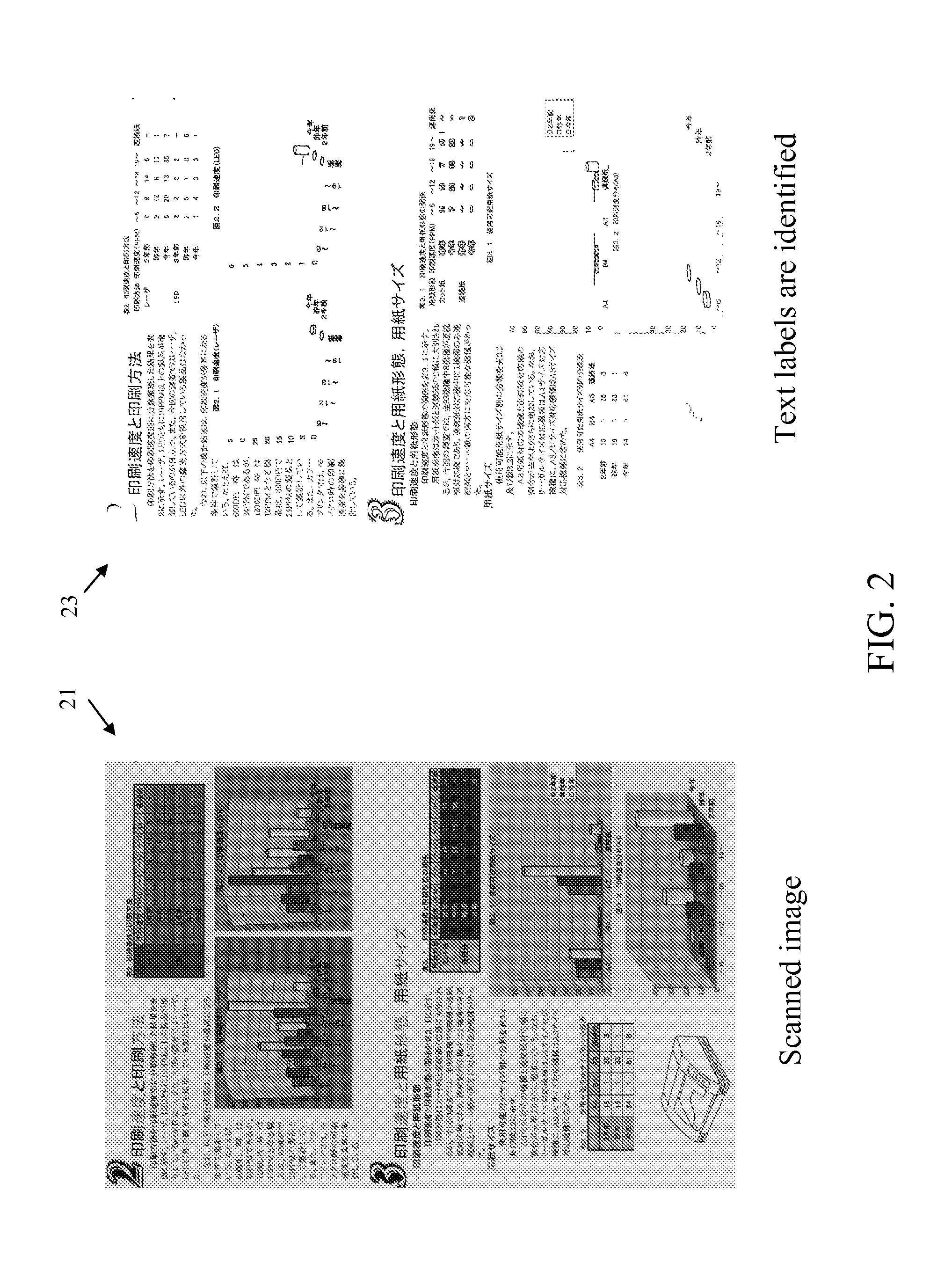Identifying Text Pixels in Scanned Images
a technology of text pixels and scanned images, applied in the field of text region identification, can solve the problems of low generalization error of classifiers, high computing costs, and high computational costs, and achieve the effects of increasing computational costs, increasing computational costs, and similar computational costs
- Summary
- Abstract
- Description
- Claims
- Application Information
AI Technical Summary
Benefits of technology
Problems solved by technology
Method used
Image
Examples
Embodiment Construction
[0062]A first step in optical character recognition, OCR, is to identity regions of an input image that contain human-readable glyphs that may constitute alphanumeric text characters and / or Chinese written characters, or more generally be part of any human writable characters (i.e. Western, Eastern, Middle-Eastern, etc.) that a machine is attempting to identify. For ease of discussion, these writable and readable characters are generically identified as printable-characters in the following discussion, unless specified otherwise. Also, a region of an image that is not a printable-character is generally designated a non-character, below.
[0063]In other words, an objective of an OCR machine is to differentiate between pixels of a digital input image that are part of printable-characters, from pixels that are not part of printable-characters (i.e. from non-characters). Pixels that are identified as being part of printable-characters may be assigned a “printable-character” label, and be ...
PUM
 Login to View More
Login to View More Abstract
Description
Claims
Application Information
 Login to View More
Login to View More - R&D
- Intellectual Property
- Life Sciences
- Materials
- Tech Scout
- Unparalleled Data Quality
- Higher Quality Content
- 60% Fewer Hallucinations
Browse by: Latest US Patents, China's latest patents, Technical Efficacy Thesaurus, Application Domain, Technology Topic, Popular Technical Reports.
© 2025 PatSnap. All rights reserved.Legal|Privacy policy|Modern Slavery Act Transparency Statement|Sitemap|About US| Contact US: help@patsnap.com



